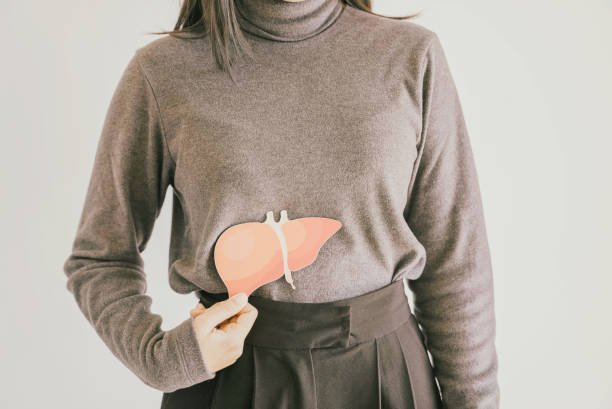Having a fatty liver means that too much fat builds up in the cells of your liver. It’s a common health problem called non-alcoholic fatty liver disease (NAFLD), and it’s becoming more widespread worldwide. Both men and women can have a fatty liver, but the signs might show up differently in women. This guide will help you understand the symptoms of fatty liver in females, what causes it, the things that make it more likely to happen, and the possible problems it can lead to.
What is fatty liver disease?
Fatty liver disease happens when there’s too much fat in your liver. It’s pretty common, especially in people who have diabetes and are carrying extra weight. Even though it might not show any signs, it can cause serious health issues. The key to preventing and fixing this is by making changes in how you live. Think of the liver as your body’s main worker for handling food and getting rid of waste.
A healthy liver doesn’t have much or any fat in it. But when you drink too much alcohol or eat too much food, your body turns some of those extra calories into fat. This fat ends up getting stored in your liver cells.
If more than 5% to 10% of your liver’s total weight is made up of fat, then you’ve got fatty liver. Fatty liver is becoming more common because people are eating more sugars and fats.
Symptoms of Fatty Liver Disease in Females:
1. Feeling Tired All the Time:
If you’re always feeling worn out, it could be a sign. Your liver, which helps make energy, might be struggling because of too much fat.
2. Uncomfortable Belly:
Some ladies with fatty liver disease might feel pain or discomfort on the upper right side of their belly, where the liver hangs out.
3. Yellow Skin and Eyes:
Ever noticed your skin or eyes turning yellow? That’s called jaundice, and it could happen if your liver isn’t processing a yellow substance called bilirubin properly.
4. Losing Weight Without Trying:
If the numbers on the scale are dropping, but you’re not intentionally dieting, it could be due to your liver having trouble with its metabolism job.
5. Swollen Belly and Legs:
Fatty liver can cause your body to hold onto extra fluid, making your belly and legs swell up.
6. More Bruises:
If you’re noticing more bruises or bleeding, it could be because your liver isn’t doing its usual job of helping your blood clot.
If you’re experiencing these signs, it’s a good idea to chat with a doctor. They can help figure out what’s going on and guide you on the best way to feel better.
Causes of Fatty Liver Disease in Females:
1. Being Overweight: If you carry too much weight, especially around your belly, it can make your liver store extra fat, putting you at risk for fatty liver disease. Learn…..Reasons of gaining extra weight
2. Issues with Insulin and Type 2 Diabetes: Conditions like insulin resistance and type 2 diabetes are connected to fatty liver disease. They mess with how your body deals with sugar, leading to fat buildup in the liver.
3. High Cholesterol and Triglycerides: Having too much cholesterol and triglycerides in your blood can also make you more likely to develop fatty liver disease.
4. Unhealthy Eating Habits: Eating a lot of saturated fats, refined carbs, and added sugars can contribute to the development of fatty liver disease.
Tips to Avoid Fatty Liver Disease:
1. Keep a Healthy Weight: Stick to a balanced diet and regular exercise to prevent and manage fatty liver disease.
2. Watch Your Blood Sugar: If you have diabetes or insulin resistance, keep a close eye on your blood sugar levels and work with healthcare professionals to manage them.
3. Go for a Healthy Diet: Focus on eating plenty of fruits, vegetables, whole grains, and lean proteins. Cut back on processed foods and sugary drinks.
4. Stay Active: Regular physical activity can help reduce fat in the liver and boost your overall health.
Fatty liver disease during pregnancy
When a pregnant woman gets a specific kind of fatty liver disease called acute fatty liver of pregnancy, about 3% of them may face this.
If a pregnant woman has stomach pain, loses her appetite, feels extremely tired, turns yellow (jaundice), or experiences nausea, she should see a doctor right away.
This kind of fatty liver disease during pregnancy can be serious, even life-threatening. So, it’s crucial to get diagnosed and treated quickly. Don’t wait if you notice these symptoms – seek medical help urgently.
Diagnosis
Knowing when to see a doctor for fatty liver disease can be tricky because it often doesn’t have obvious signs. But here’s how doctors figure it out:
1. Checkup and Questions: If you’re unsure, talk to your doctor. They’ll ask about your health history, what you eat, and how you live. This helps them understand if fatty liver might be an issue for you.
2. Look and Feel: During a checkup, the doctor might measure your height and weight to calculate your body mass index (BMI). They’ll also look for things like jaundice (yellowish skin) and check if your liver is enlarged. It’s like a close inspection of your body.
3. Blood Tests: You might need a blood test. This can show if certain liver enzymes are higher than they should be, giving a clue about what’s happening in your liver.
4. Special Pictures: Doctors might use special scans like ultrasound, CT scans, or MRI to take pictures of your liver. These can reveal if there’s extra fat or other signs of fatty liver disease.
5. Tiny Tissue Check: In some cases, a doctor might do a biopsy. This means using a small needle to take a tiny piece of your liver for closer inspection. It’s a minor procedure, and they numb the area so you won’t feel much. This helps them confirm if there’s any disease in your liver.
Remember, these steps help your doctor figure out if fatty liver is causing any issues.
FAQs
What causes fatty liver disease in women?
Excess weight, especially around the belly, insulin resistance, diabetes, high cholesterol, and unhealthy diets can cause fatty liver disease in women.
How can I prevent fatty liver disease?
To prevent fatty liver disease, maintain a healthy weight through balanced eating and regular exercise. Monitor blood sugar levels, choose a nutritious diet rich in fruits and veggies, and stay physically active.
Can diabetes increase the risk of fatty liver disease?
Yes, diabetes is closely linked to fatty liver disease. Managing blood sugar levels and working with healthcare professionals can help reduce this risk.
What role does exercise play in preventing fatty liver disease?
Regular exercise is crucial. It helps reduce fat in the liver and improves overall health. Aim for activities you enjoy, like walking, dancing, or biking, to stay active and lower your risk of fatty liver disease.


